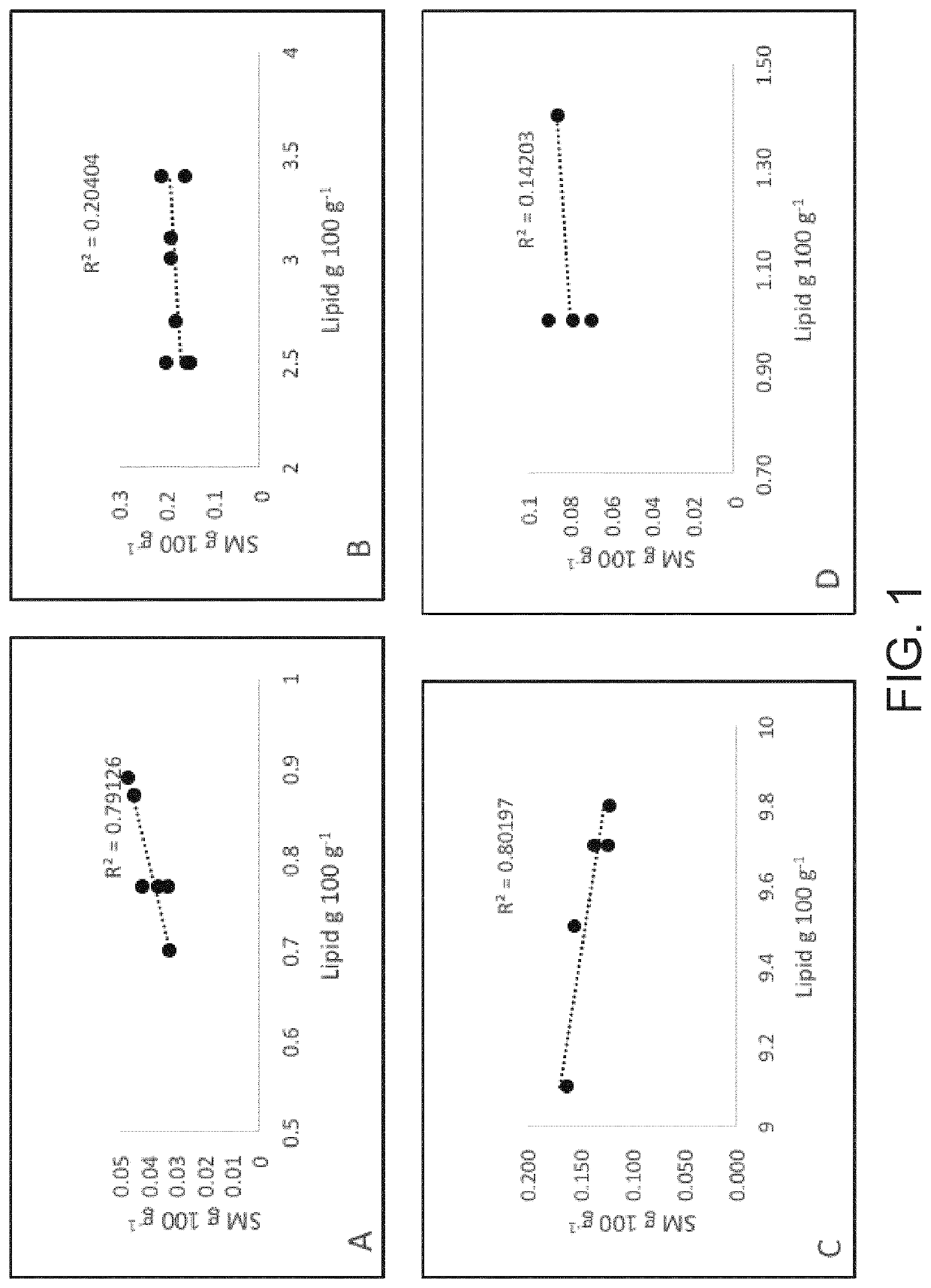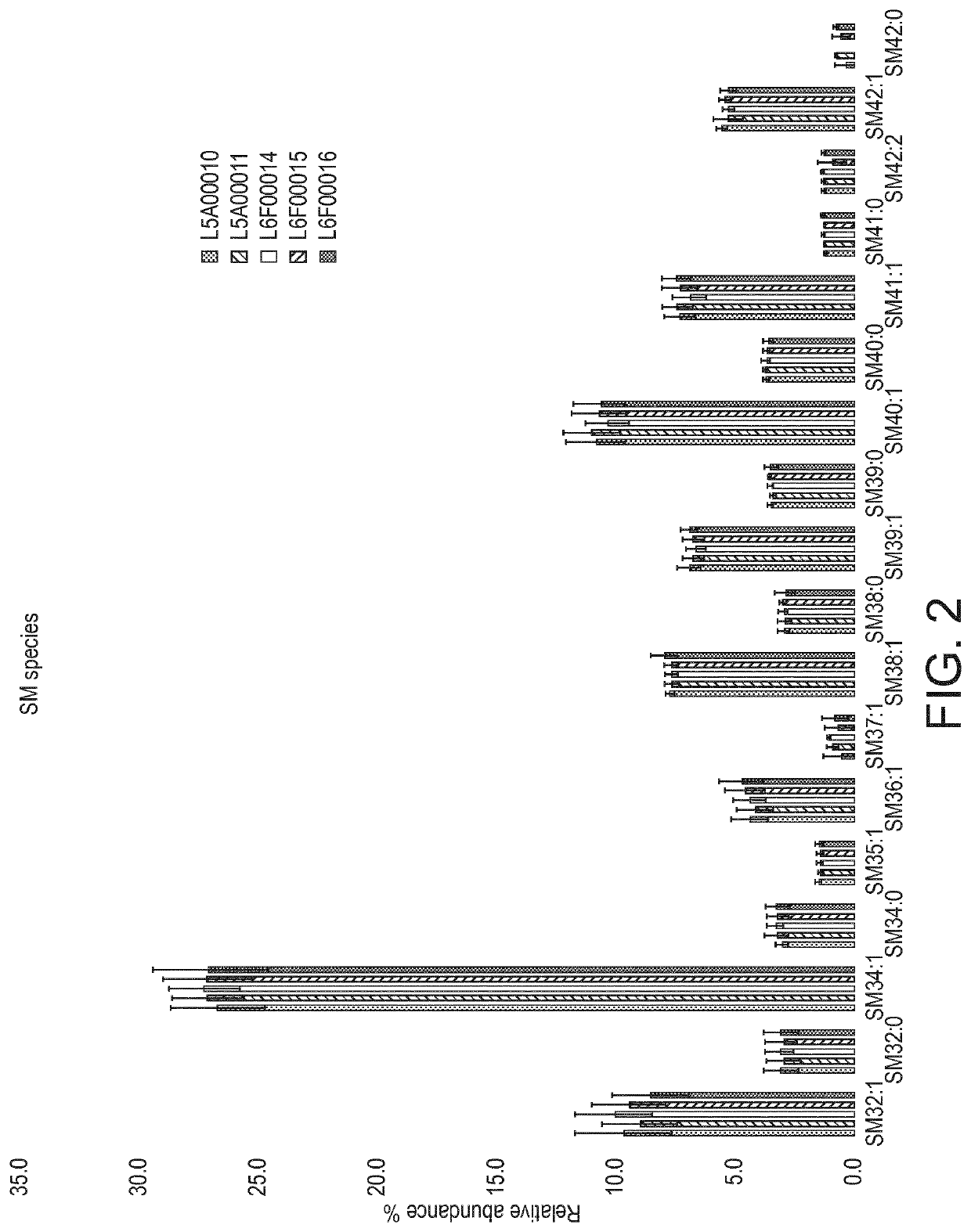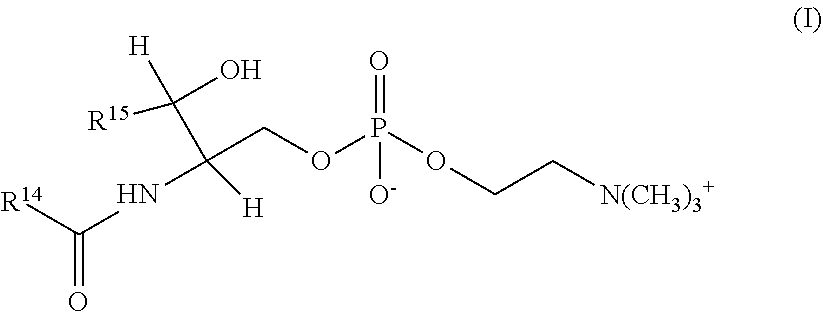Whey protein extracts and their use as sphingomyelin source
a technology of sphingomyelin and whey protein, which is applied in the field of alactalbumin-enriched whey protein extract, can solve the problems of formula-fed infants having a lower sphingomyelin intake, insufficient or inability to breastfeed, and may have negative effects on growth and development, so as to prevent sub-optimal neurodevelopment and/or cognitive development of infants, and optimise infant growth
- Summary
- Abstract
- Description
- Claims
- Application Information
AI Technical Summary
Benefits of technology
Problems solved by technology
Method used
Image
Examples
example 1
[0095]1. Materials and Methods
[0096]1.1 Raw Materials & Nutritional Powder Products
[0097]1.1.1 Infant Formula Raw Materials
[0098]Three SMP samples were obtained from each of two suppliers: one located in Ireland (SMP A) and the other in the USA (SMP B). Three WPC samples (35% protein) samples were obtained from each of three suppliers; one located in Ireland (WPC A), one in USA (WPC B) and one in Germany (WPC C). Representative WPC 80% enriched in alpha-lactalbumin ingredients were obtained from two suppliers: one located in USA (a-lac A; n=5) and the other in Europe (a-lac B; n=4). All raw materials were commercially available and produced over the period of 2014 to 2015. Protein content was measured by the Dumas method , fat content was determined by a gravimetric method as described by O'Sullivan (2011) and ash content was measured by dry-ashing at 525° C. until a white ash obtained (AOAC, 1995).
[0099]1.1.2 Infant Formula Powders
[0100]Commercially-available infant formula powder ...
example 2
[0142]Examples of synthetic nutritional compositions (infant formulas) in accordance with the invention is set out in Tables 5 to 8.
TABLE 5UNITSNUTRIENTper LitreFormula AEnergykcal662.0Energykj2768.5Water / Moistureg902.6Ashg3.4ProteinProteing13.465% Wheyg8.7Alpha-lactalbuming2.3 stemmingfrom 9.5 ofalpha-lactalbuminenriched WPE asused in theinvention.35% Caseing4.7CarbohydratesAvailable Carbohydratesg68.6Carbohydrateg73.6of which lactoseg68.6of which sugarsg68.6Soluble Dietary Fiber (as oligofructose)g5.0LipidsTotal Fatg36.0Fatty acids saturatedg14.0Trans Fatty Acidsg0.3Sphingomyelinmg105.0Linoleic Acidmg5200.0Linolenic Acidmg420.5linoleic:alpha-linolenic acid ratioratio12.4ARAmg132.0DHAmg132.0ARA / DHAratio1.0VitaminsVitamin A (Retinol)mcg RE660.1Beta-carotenemcg150.0Vitamin D (Cholecalciferol)mcg D12.0Vitamin E (TE)mg5.8Vitamin Kmcg53.6Vitamin B1 (Thiamine)mg0.8Vitamin B2 (Riboflavin)mg0.9Vitamin B6 (Pyridoxine)mg0.6Vitamin B12 (Cyanocabalamin)mcg7.0Niacinmg5.0Folic Acidmcg219.0Pantot...
PUM
 Login to View More
Login to View More Abstract
Description
Claims
Application Information
 Login to View More
Login to View More - R&D
- Intellectual Property
- Life Sciences
- Materials
- Tech Scout
- Unparalleled Data Quality
- Higher Quality Content
- 60% Fewer Hallucinations
Browse by: Latest US Patents, China's latest patents, Technical Efficacy Thesaurus, Application Domain, Technology Topic, Popular Technical Reports.
© 2025 PatSnap. All rights reserved.Legal|Privacy policy|Modern Slavery Act Transparency Statement|Sitemap|About US| Contact US: help@patsnap.com



